- Why Lotus is the Perfect Addition to Your Garden
- 1. Exquisite Beauty
- 2. Cultural Significance
- 3. Easy to Grow
- 4. Attracts Wildlife
- 5. Versatile Plant
- 6. Calming Effect
- 7. Medicinal Benefits
- 8. Symbol of Resilience
- 9. Unique Foliage
- 10. Long Blooming Season
- The Symbolic Meaning of Lotus in Various Cultures
- Ancient Egypt
- Buddhism
- Hinduism
- Chinese Culture
- Japanese Culture
- Native American Culture
- African Culture
- The Mesmerizing Beauty of Lotus Flowers
- The Symbolism of Lotus Flowers
- The Beauty of Lotus Flowers
- Growing Lotus Flowers in Your Garden
- In Conclusion
- Lotus Care: Tips for Growing and Maintaining Lotus Plants
- Choosing the Right Location for your Lotus Garden
- Sunlight
- Water Depth
- Water Quality
- Soil Type
- Temperature
- Proximity to Other Plants
- How to Plant Lotus Seeds: Step-by-Step Guide for Beginners
- Lotus Varieties: Explore Different Colors and Shapes
- 1. Nelumbo nucifera ‘Alba’
- 2. Nelumbo nucifera ‘Rosea’
- 3. Nelumbo nucifera ‘Red Beauty’
- 4. Nelumbo nucifera ‘Golden Sunset’
- 5. Nelumbo nucifera ‘Momo Botan’
- 6. Nelumbo nucifera ‘Viridis’
- The Benefits of Having Lotus in Your Garden
- Inspiring Lotus Garden Designs and Ideas
- 1. A Serene Water Garden
- 2. Zen-Inspired Lotus Garden
- 3. Tropical Paradise Lotus Garden
- 4. Japanese-Inspired Lotus Garden
- 5. Small-Space Lotus Garden
- Questions and Answers:
- Can I grow lotus in a small garden?
- What are some tips for successfully growing lotus in my garden?
- Do lotus flowers require a lot of maintenance?
- Are lotus flowers easy to grow for beginners?
- How long does it take for lotus flowers to bloom?
- Can lotus plants survive during the winter?
- Videos: Regenerative Farming: Tackling Racism with Rice [The Jubilee Justice Story]
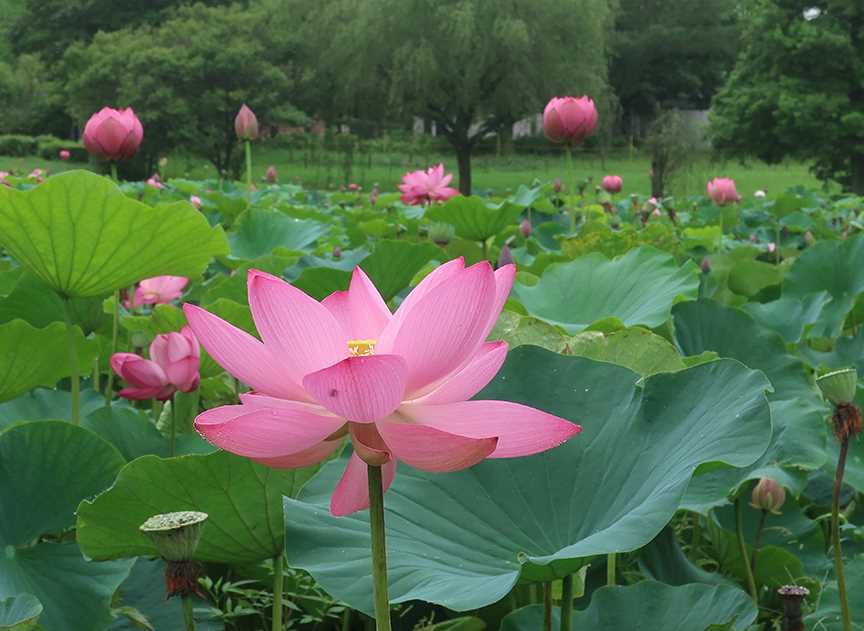
Lotus flowers have long been considered a symbol of beauty, purity, and spiritual enlightenment. These stunning aquatic plants can be a wonderful addition to any garden, adding a touch of elegance and tranquility. With their vibrant colors and unique shape, lotus flowers are sure to capture the attention of anyone who sees them.
Growing lotus in your garden may seem like a daunting task, but with a few expert gardening tips, you can create a thriving lotus pond that will be the envy of your neighbors. Whether you have a small backyard or a sprawling estate, there is a lotus variety to suit your space and climate.
One of the first things to consider when growing lotus is the location of your pond. Lotus plants thrive in full sunlight, so choose a spot that receives at least six hours of direct sunlight each day. It’s also important to ensure that your pond has good drainage to prevent waterlogged soil, which can lead to rotting roots.
“Lotus flowers have long been considered a symbol of beauty, purity, and spiritual enlightenment.”
When it comes to planting lotus, it’s important to use a wide and shallow container, as lotus plants have long roots that require ample space to grow. Fill the container with a mixture of loam and clay, and place the tuber on top. Make sure that the tuber is positioned with the growing tip facing up, and cover it with a layer of soil, leaving the top exposed.
Once your lotus plants are established, they will require regular watering to keep the soil moist. It’s important to avoid overwatering, as this can cause the tubers to rot. Fertilize your lotus plants every two weeks during the growing season with a water-soluble fertilizer specifically formulated for aquatic plants.
With proper care and attention, your lotus plants will reward you with their exquisite beauty year after year. So, why wait? Start growing lotus in your garden and experience the joy and serenity they bring.
Why Lotus is the Perfect Addition to Your Garden
1. Exquisite Beauty
Lotus flowers are known for their exquisite beauty and are often considered a symbol of serenity and purity. With their vibrant colors and unique shape, lotus flowers can add a touch of elegance and grace to any garden.
2. Cultural Significance
Lotus flowers hold great cultural significance in many Asian cultures, including Buddhism and Hinduism. They are often associated with spiritual enlightenment, rebirth, and the overcoming of obstacles. By including lotus flowers in your garden, you can embrace and celebrate these rich cultural traditions.
3. Easy to Grow
Contrary to popular belief, lotus flowers are surprisingly easy to grow and maintain. They can thrive in a variety of climates and require minimal care once established. With proper sunlight, soil, and water conditions, you can enjoy the beauty of lotus flowers in your garden without much effort.
4. Attracts Wildlife
Lotus flowers are not only visually appealing but also attract a variety of wildlife. Bees, butterflies, and birds are often drawn to the vibrant colors and sweet fragrance of lotus flowers, making your garden a haven for biodiversity. By incorporating lotus flowers into your garden, you can create a thriving ecosystem and contribute to the conservation of pollinators.
5. Versatile Plant
Lotus flowers are a versatile plant that can be grown in various settings. Whether you have a pond, a container, or a dedicated lotus bed, there are plenty of options for incorporating lotus flowers into your garden. Their adaptable nature makes them suitable for gardens of all sizes and styles.
6. Calming Effect
Lotus flowers have long been associated with feelings of calmness and tranquility. Just being in the presence of these beautiful flowers can evoke a sense of peace and relaxation. By adding lotus flowers to your garden, you can create a serene atmosphere where you can unwind and find solace.
7. Medicinal Benefits
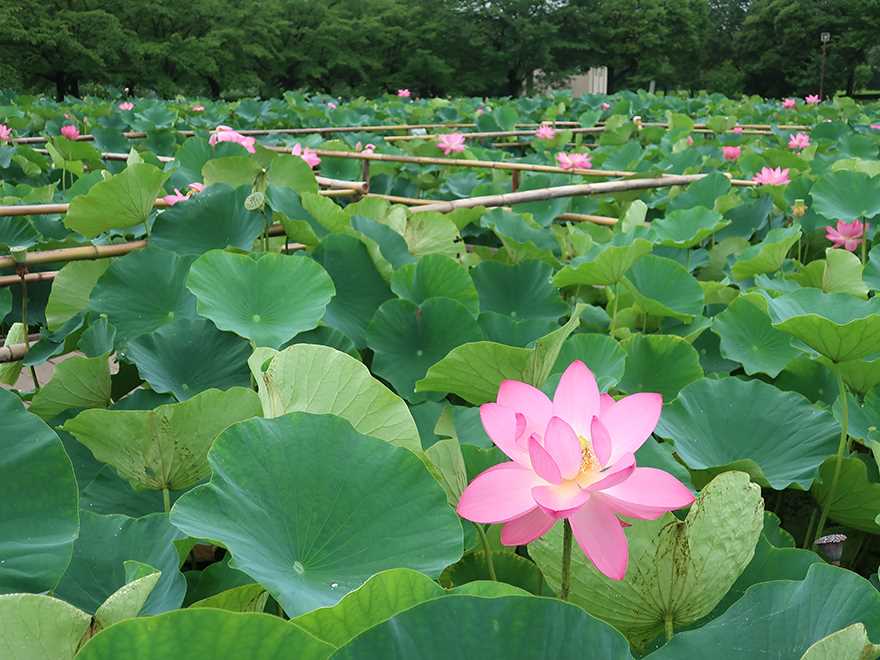

In addition to their aesthetic appeal, lotus flowers also have several medicinal benefits. The various parts of the lotus plant, including the petals, seeds, and rhizome, have been used in traditional medicine for centuries. Lotus plants are believed to have anti-inflammatory, antioxidant, and even anti-cancer properties. Including lotus flowers in your garden can provide you with a source of natural remedies.
8. Symbol of Resilience
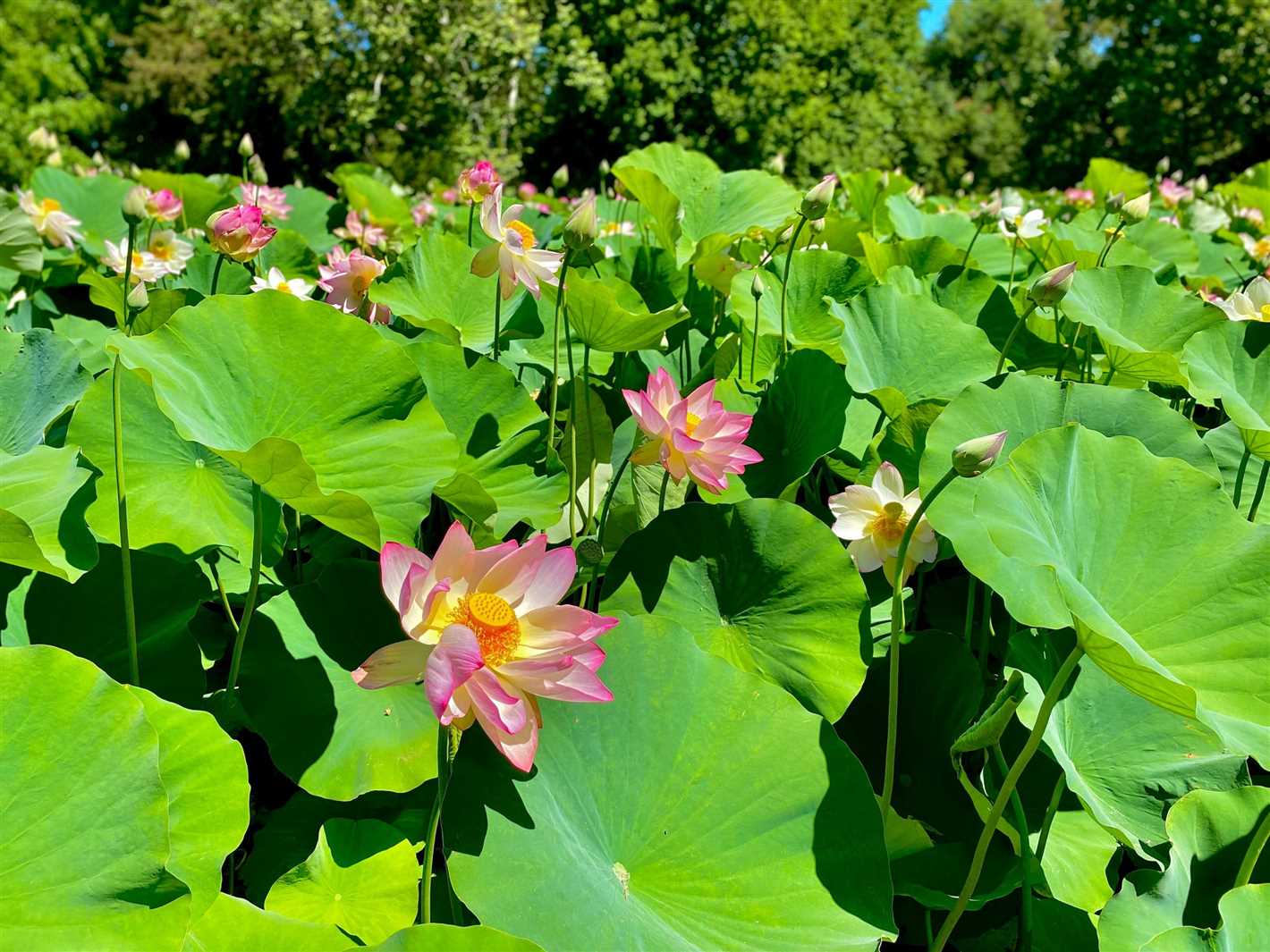

Lotus flowers have a unique ability to grow and thrive in unfavorable conditions. They often emerge from murky and muddy waters, representing resilience and perseverance. By including lotus flowers in your garden, you can create a visual metaphor for overcoming challenges and finding beauty in adversity.
9. Unique Foliage
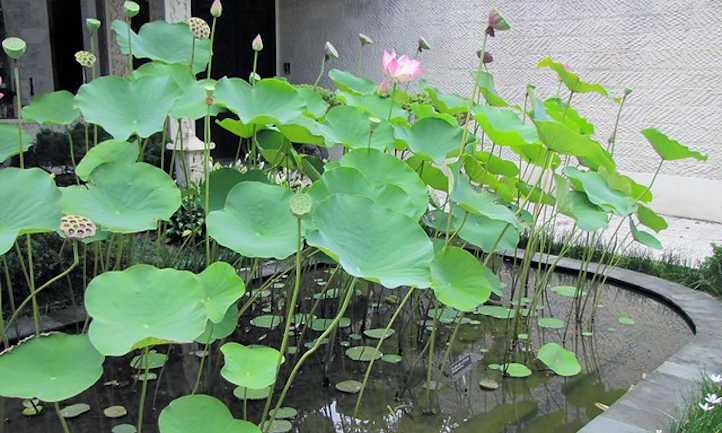

Lotus plants not only produce beautiful flowers but also have unique foliage that adds visual interest to your garden. The large and round leaves of lotus plants float on the water’s surface, creating an enchanting display. The combination of the striking flowers and the whimsical foliage can make your garden truly stand out.
10. Long Blooming Season
Lotus flowers have a long blooming season, allowing you to enjoy their beauty for an extended period. Depending on the variety, lotus flowers can bloom from early summer to late autumn, providing continuous visual delight throughout the growing season. With proper care, you can ensure a vibrant and colorful garden all year round.
In conclusion, lotus flowers are the perfect addition to any garden due to their exquisite beauty, cultural significance, easy cultivation, wildlife attraction, versatility, calming effect, medicinal benefits, resilience symbolism, unique foliage, and long blooming season. By including lotus flowers in your garden, you can create a truly enchanting and serene outdoor space.
The Symbolic Meaning of Lotus in Various Cultures
The lotus flower holds significant symbolic meaning in various cultures around the world. From ancient civilizations to modern-day societies, the lotus has been regarded as a sacred and revered symbol.
Ancient Egypt
In Ancient Egypt, the lotus flower was closely associated with the sun and creation. It was believed to have emerged from the primeval waters of chaos, representing the process of creation and rebirth. The lotus also symbolized fertility, divine birth, and the cycle of life.
Buddhism
In Buddhism, the lotus flower is one of the most prominent symbols. It represents purity, enlightenment, and spiritual awakening. Just as a lotus rises from muddy waters to blossom in full beauty, it signifies the journey from the darkness of ignorance to the light of wisdom. The different stages of lotus growth also represent the stages of spiritual development.
Hinduism
The lotus holds deep significance in Hinduism, where it symbolizes divine beauty, purity, and spiritual enlightenment. It is associated with various deities such as Brahma, Saraswati, and Lakshmi. The unfolding petals of the lotus represent the awakening of one’s inner consciousness and the path to self-realization.
Chinese Culture
In Chinese culture, the lotus is regarded as a symbol of purity, grace, and elegance. It is associated with the embodiment of feminine beauty and often used as an artistic motif in Chinese paintings, poetry, and architecture. The lotus also represents perseverance, as it thrives and blossoms in challenging environments.
Japanese Culture
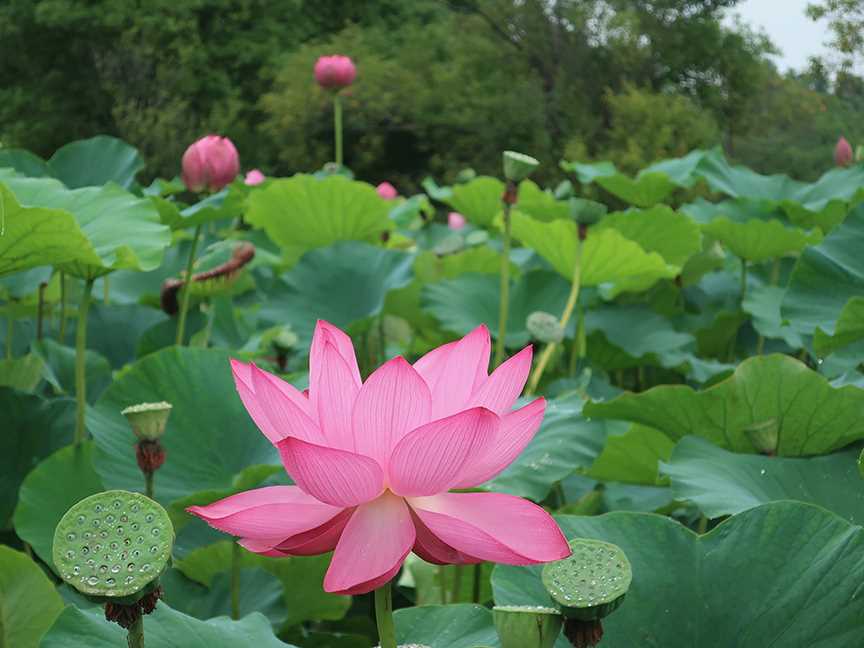

In Japanese culture, the lotus is known as “Hasu” and is highly revered for its beauty and symbolism. It represents purity of body, speech, and mind. The unfolding petals of the lotus also symbolize the growth and development of an individual’s spiritual journey.
Native American Culture
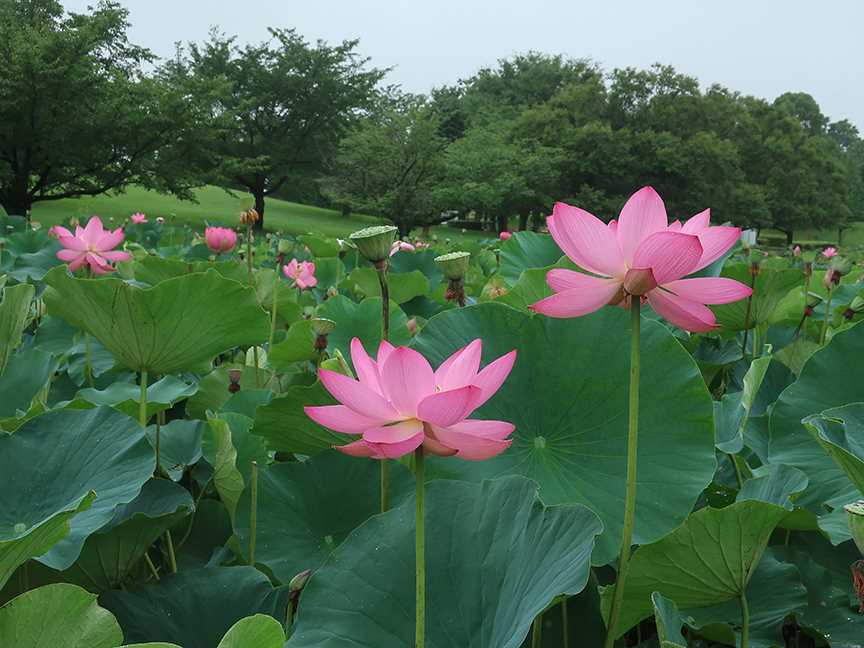

In Native American culture, the lotus is seen as a potent symbol of creation, fertility, and spiritual transformation. It is often associated with the idea of rebirth and the ability to bring balance and harmony to one’s life.
African Culture
In various African cultures, the lotus flower is used as a symbol of beauty, prosperity, and purity. It is often associated with powerful deities and used in rituals and ceremonies as an offering to the gods.
Overall, the lotus flower holds a universal symbolic meaning that transcends cultural boundaries. It represents the journey towards enlightenment, spiritual growth, and the ability to bloom in the face of adversity. Its beauty and significance continue to captivate people across different cultures and remain a source of inspiration and spiritual awakening.
The Mesmerizing Beauty of Lotus Flowers
Lotus flowers are renowned for their mesmerizing beauty and are beloved by gardeners around the world. These unique and elegant flowers have been revered for centuries and are associated with various symbolic meanings in different cultures. Let’s explore why lotus flowers are so captivating and how you can incorporate them into your garden.
The Symbolism of Lotus Flowers
Lotus flowers hold great symbolic significance in many cultures. In Buddhism, the lotus represents purity and spiritual enlightenment. The flower’s ability to rise and bloom from muddy waters is seen as a metaphor for overcoming obstacles and achieving enlightenment.
In ancient Egyptian mythology, the lotus flower is associated with rebirth and the sun. It is often depicted in hieroglyphics and ancient art, symbolizing the cycle of death and rebirth that is inherent in the natural world.
The Beauty of Lotus Flowers
Lotus flowers are known for their strikingly beautiful appearance. They feature large, vibrant petals that can range in color from white and pink to yellow and blue. The flowers are supported by tall, sturdy stems that rise above the water, creating a stunning visual display.
What sets lotus flowers apart is their unique structure. The flowers have multiple layers of petals, often with a golden center, creating a captivating and intricate pattern. When in full bloom, lotus flowers create a breathtaking sight that is hard to ignore.
Growing Lotus Flowers in Your Garden
If you want to add the mesmerizing beauty of lotus flowers to your garden, you can start by selecting a suitable location. Lotus flowers require full sun and thrive in shallow, still water. You can plant them in a pond, a large container, or even a specially designed lotus tub.
When planting lotus flowers, it’s essential to provide them with well-drained soil and ample space for growth. These aquatic plants can spread quickly, so make sure to give them enough room to flourish.
Caring for lotus flowers involves regular watering to keep the soil or water level consistent. You should also fertilize the plants regularly to promote healthy growth and abundant blooms. Removing dead foliage and spent flowers will help maintain the plant’s overall health and appearance.
In Conclusion
Lotus flowers are a true marvel of nature, enchanting with their beauty and inspiring with their symbolism. Adding these captivating flowers to your garden will not only create a stunning visual display but also add a touch of spirituality and tranquillity to your outdoor space.
Lotus Care: Tips for Growing and Maintaining Lotus Plants
- Start by selecting a suitable location for your lotus plant. They thrive in full sun, so choose a spot in your garden that gets at least 6 hours of direct sunlight each day.
- Lotus plants need a large container or a pond to grow in. If using a container, make sure it is at least 18 inches deep and wide enough to accommodate the plant’s root system.
- Fill the container or pond with a mixture of loamy soil and clay. The soil should be rich in organic matter and well-draining. Avoid using garden soil as it may contain pests or diseases.
- When planting lotus tubers, place them in the soil at a depth of about 2 inches. Make sure the growth tips are facing upward. Gently cover the tubers with soil, leaving the growth tips exposed.
- Water the lotus plant thoroughly, allowing the water to reach the top of the container or pond. Maintain a water level of 2-3 inches above the soil level throughout the growing season.
- Fertilize the lotus plant regularly during the growing season. Use a slow-release fertilizer specially formulated for aquatic plants, following the manufacturer’s instructions.
- Prune any yellow or dead leaves from the lotus plant to promote healthy growth. Remove any debris or fallen leaves from the water surface to prevent rot or disease.
- Lotus plants are heavy feeders and may require additional fertilizer if growth is slow. Monitor the plant for signs of nutrient deficiency and adjust the fertilizer accordingly.
- Protect your lotus plant from extreme temperatures. In colder climates, move the container indoors or to a sheltered area during the winter months.
- Monitor the water quality in your lotus pond or container. Maintain a pH level between 6.5 and 7.5 and ensure the water is free from toxins or pollutants.
- If pests such as aphids or snails are a problem, use organic pest control methods or consult with a local garden center for suitable remedies.
By following these care tips, you can enjoy the beauty of lotus plants in your garden for many years to come. Whether you choose to grow them in a container or a pond, these stunning flowers will surely add a touch of elegance to any outdoor space.
Choosing the Right Location for your Lotus Garden
When it comes to creating a stunning lotus garden, choosing the right location is essential. Lotuses require specific growing conditions in order to thrive and produce beautiful blooms. Here are some expert tips to help you select the perfect spot for your lotus garden:
Sunlight
Lotuses are sun-loving plants and require at least six hours of direct sunlight per day. It is important to choose a location that receives ample sunlight throughout the day. Avoid areas that are shaded by buildings, trees, or other structures. Lotuses thrive in full sun, which allows them to grow and produce vibrant flowers.
Water Depth
Lotuses are water plants and need to be planted in a location with a water depth of around 6 to 18 inches. The water should be relatively still, as lotuses prefer calm conditions. Avoid areas with strong water currents or areas prone to flooding. A shallow pond or a container with proper water depth can serve as an ideal location for your lotus garden.
Water Quality
Lotuses prefer water that is clean and free of chemicals. They are sensitive to water pollutants and thrive in water that has a neutral pH level. If you are using tap water, let it sit for 24 hours to allow any chlorine or other chemicals to dissipate. A water test kit can also help you determine if the water quality is suitable for lotuses.
Soil Type
Lotuses prefer soil that is rich in organic matter and has good drainage. Sandy loam soils are ideal for lotus plants. Avoid clay soils that retain too much water and can lead to root rot. If your soil is not ideal, you can create a raised bed or use containers with suitable soil to provide a favorable growing environment for your lotus plants.
Temperature
Lotuses grow best in warm climates and prefer water temperatures between 75 and 85 degrees Fahrenheit. They are not frost-tolerant and cannot survive in freezing temperatures. If you live in a colder climate, consider growing lotuses in containers that can be brought indoors during the winter months.
Proximity to Other Plants
Lotuses are vigorous growers and can quickly take over a garden if not properly contained. It is important to give them enough space and keep them away from other plants. Plant lotuses at a distance from other plants to prevent competition for nutrients and space.
By considering these factors and choosing the right location, you can create a stunning lotus garden that flourishes with beautiful blooms. Remember to provide the necessary care and maintenance to keep your lotus plants healthy and thriving.
How to Plant Lotus Seeds: Step-by-Step Guide for Beginners
Planting lotus seeds can be an exciting and rewarding experience for beginner gardeners. With proper care and attention, you can enjoy the beauty of lotus flowers in your own garden. Here is a step-by-step guide to help you get started:
- Choose the Right Seeds: Select lotus seeds that are fresh and healthy. Look for seeds that are plump, firm, and undamaged. Avoid seeds that are small or shriveled.
- Prepare the Containers: Fill a container with a mixture of topsoil and organic compost. The container should be deep enough to accommodate the lotus seeds, with at least 2 inches of soil above the seeds.
- Soak the Seeds: Place the lotus seeds in a bowl of warm water and let them soak for 24 to 48 hours. This will help soften the seed coat and improve germination.
- Sow the Seeds: After soaking, take the seeds out of the water and place them on top of the soil in the container. Gently press the seeds into the soil, but do not bury them completely.
- Water the Seeds: Carefully water the container until the soil is evenly moist. Avoid overwatering, as lotus seeds can rot if they sit in water for too long.
- Provide Proper Lighting: Place the container in a sunny location where the lotus seeds can receive at least 6 to 8 hours of direct sunlight. If you don’t have access to natural sunlight, you can use grow lights.
- Maintain the Moisture Level: Check the moisture level of the soil regularly and water the container whenever the top inch of soil becomes dry. Keep the soil consistently moist, but not waterlogged.
- Monitor the Growth: In about a week, you should start to see small leaf sprouts emerging from the soil. Continue to care for the seedlings by watering them and providing adequate sunlight.
- Transplanting: Once the seedlings have developed several leaves and roots, usually after 4 to 6 weeks, they can be transplanted into a larger container or a pond with a water depth of 6 to 18 inches.
- Enjoy the Blooms: With proper care and patience, your lotus seeds will grow into beautiful plants that will reward you with stunning flowers. Enjoy the beauty and fragrance of lotus flowers in your garden!
Lotus Varieties: Explore Different Colors and Shapes
Lotus plants are known for their stunning beauty and unique shapes. They come in a wide variety of colors, ranging from vibrant pinks and purples to soft whites and yellows. Here are some popular lotus varieties you can find to add a touch of elegance to your garden:
1. Nelumbo nucifera ‘Alba’
This lotus variety features large, white flowers with a subtle hint of pink at the center. ‘Alba’ blooms are known for their delicate fragrance, making them a popular choice among lotus enthusiasts.
2. Nelumbo nucifera ‘Rosea’
If you love pink, this variety is perfect for you. ‘Rosea’ lotus plants produce vibrant pink flowers that add a pop of color to any garden. They are also known for their long-lasting blooms.
3. Nelumbo nucifera ‘Red Beauty’
‘Red Beauty’ lotus plants are characterized by their striking red flowers. These lotus plants are eye-catching and can become a focal point in any garden. The deep red color adds a touch of drama and elegance.
4. Nelumbo nucifera ‘Golden Sunset’
This lotus variety is known for its unique yellow flowers. ‘Golden Sunset’ lotus plants create a stunning contrast against green foliage and other lotus varieties. They bring a sunny, cheerful vibe to any garden.
5. Nelumbo nucifera ‘Momo Botan’
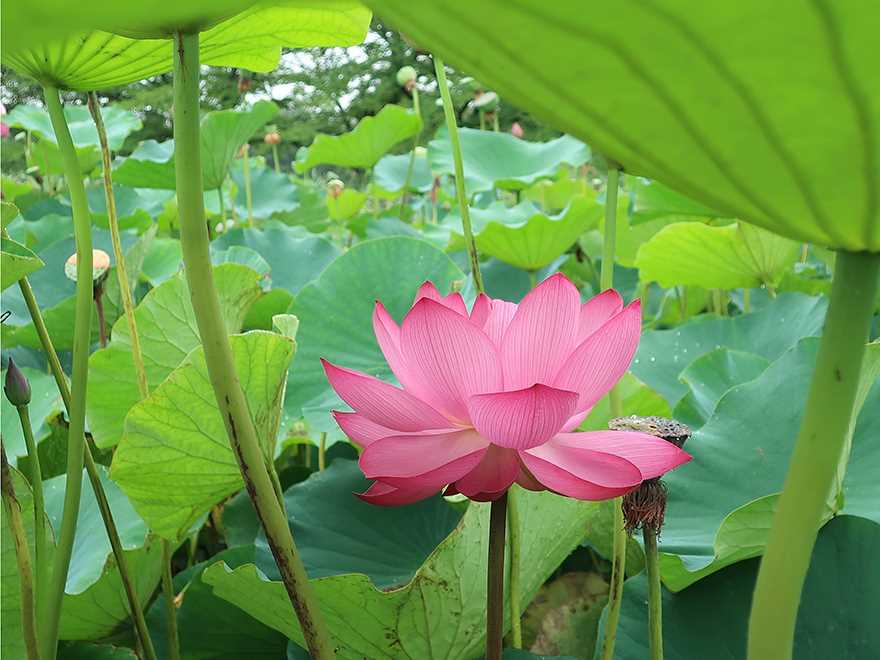

‘Momo Botan’ lotus plants produce beautiful flowers with multiple layers of petals. The petals have a unique combination of pink and white colors, giving the blooms a soft, romantic look.
6. Nelumbo nucifera ‘Viridis’
If you’re looking for something different, ‘Viridis’ lotus plants are for you. These lotus plants have green flowers, making them stand out among other varieties. They add a touch of uniqueness and intrigue to any garden.
These are just a few examples of the many lotus varieties available. Explore different colors and shapes to create a diverse and visually stunning lotus garden.
The Benefits of Having Lotus in Your Garden
Lotus flowers are not only visually stunning but also offer several benefits to your garden and overall well-being. Here are some of the reasons why you should consider including lotus in your garden:
Improves Air Quality: Lotus flowers release oxygen during the day and absorb carbon dioxide at night, making them excellent natural air purifiers. Having lotus in your garden can help improve the quality of the air you breathe.
Aids in Relaxation: The serene beauty of lotus flowers can have a calming effect on your mind, helping to reduce stress and promote relaxation. Spending time near a lotus pond can be a great way to unwind and find peace.
Attracts Wildlife: Lotus plants attract various wildlife, including birds, bees, and butterflies. Their vibrant blooms and large leaves provide a habitat for these creatures and contribute to the biodiversity of your garden.
Symbolizes Spiritual Growth: In many cultures, lotus flowers symbolize spiritual enlightenment and growth. Having lotus in your garden can serve as a reminder of the journey towards self-improvement and personal development.
Provides Shade and Shelter: The large leaves of lotus plants provide shade for other aquatic plants in your pond or water feature. They also offer shelter for fish and other aquatic organisms, creating a balanced ecosystem.
Low Maintenance: Lotus plants are relatively easy to grow and require minimal maintenance. Once established, they can thrive in various water conditions and can be a long-lasting addition to your garden.
Whether you’re looking to enhance the aesthetics of your garden or create a peaceful oasis, adding lotus to your garden can bring numerous benefits. Explore the beauty and benefits of lotus flowers and create a harmonious environment for both yourself and nature.
Inspiring Lotus Garden Designs and Ideas
1. A Serene Water Garden
Create a tranquil oasis in your garden by incorporating a lotus pond. Start by digging a shallow pond and lining it with a waterproof material. Add rocks and ornamental plants around the edges to create a natural look. Plant lotus bulbs in the pond, making sure to provide them with plenty of sunlight and nutrient-rich soil. The blooming lotus flowers will add a touch of elegance to your garden while attracting birds and other wildlife.
2. Zen-Inspired Lotus Garden
For a minimalist and peaceful garden, consider a Zen-inspired lotus garden design. Keep the space simple and clutter-free, focusing on clean lines and simplicity. Use gravel or sand as the main element and arrange rocks strategically to create a sense of balance and harmony. Plant lotus flowers or place lotus sculptures in the center to enhance the calming atmosphere. Add some bamboo or ornamental grasses for added texture and movement.
3. Tropical Paradise Lotus Garden
If you live in a tropical climate, create a lush and vibrant lotus garden reminiscent of a tropical paradise. Plant lotus flowers in a natural pond or a large container filled with water. Surround the lotus plants with tropical foliage like palm trees, banana plants, and colorful flowers. Add some lounge chairs or a hammock for a relaxing space where you can admire the beauty of the lotus flowers and enjoy the tropical ambiance.
4. Japanese-Inspired Lotus Garden
Embrace the beauty of Japanese gardens by incorporating lotus flowers into your design. Create a pond with a stone bridge and small islands, symbolizing the traditional Japanese garden style. Plant lotus flowers in the pond, strategically placing them to create a visually appealing arrangement. Add lanterns and pagodas to enhance the Japanese aesthetic. Use natural elements like bamboo fences or stone pathways to complete the look.
5. Small-Space Lotus Garden
Even if you have a limited garden space, you can still enjoy the beauty of lotus flowers. Consider planting lotus bulbs in a large container or a small pond. Opt for smaller lotus varieties that are suitable for container gardening. Arrange some stones and water plants around the container to create a natural and pleasing display. Place the container in a sunny spot and enjoy the elegant blooms of lotus flowers in your compact garden.
| Design | Features |
|---|---|
| A Serene Water Garden | Lotus pond, rocks, and ornamental plants |
| Zen-Inspired Lotus Garden | Gravel or sand, rocks, lotus flowers or sculptures |
| Tropical Paradise Lotus Garden | Lotus flowers, tropical foliage, lounge chairs or hammock |
| Japanese-Inspired Lotus Garden | Pond with stone bridge, islands, lotus flowers, lanterns and pagodas |
| Small-Space Lotus Garden | Container or small pond, stones, water plants |
Questions and Answers:
Can I grow lotus in a small garden?
Yes, you can grow lotus in a small garden. There are miniature varieties available that are better suited for smaller spaces.
What are some tips for successfully growing lotus in my garden?
Some tips for successfully growing lotus in your garden include choosing a suitable location with full sunlight, using a large container or pond, and ensuring proper water and soil conditions.
Do lotus flowers require a lot of maintenance?
Lotus flowers do require some maintenance, such as regular watering and fertilizing. However, they are generally low-maintenance and can thrive in various climates.
Are lotus flowers easy to grow for beginners?
Lotus flowers can be a bit challenging to grow for beginners, especially if you are not familiar with water gardening. However, with the right information and proper care, they can be successfully grown by beginners.
How long does it take for lotus flowers to bloom?
The time it takes for lotus flowers to bloom can vary depending on the variety and growing conditions. On average, it takes about 60-90 days for lotus flowers to bloom after planting the seeds.
Can lotus plants survive during the winter?
Lotus plants are sensitive to cold temperatures and cannot survive freezing conditions. If you live in a colder climate, you will need to take steps to protect your lotus plants during the winter, such as bringing them indoors or using a water heater to keep the water temperature stable.







